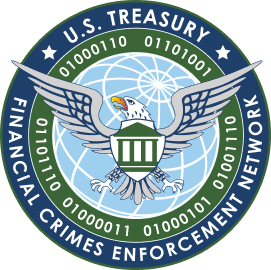Security you can count on
We know how crucial secure services are when it comes to your money and information. That's why we use advanced technology and strict measures to ensure your transfers are always protected and secure.
Your security is our top priority
At Xe, we go above and beyond to protect your money and personal information. With advanced technology and strict security measures, we ensure a safe and worry-free experience every time you use our services.

Xe and Euronet Worldwide
As part of the Euronet Worldwide (NASDAQ: EEFT) family, we form the world’s third-largest money transfer network. We're here to stay, committed to providing top-tier security and reliability for every transaction you make.

Protecting what matters
Secure infrastructure
We use reliable systems for secure, fast transfers. State-of-the-art tech and 24/7 monitoring ensure your transactions are safe, so you can feel confident every time you send money.
Authentication & access control
We use Multi-Factor Authentication (MFA) with biometric verification for logins. Account activity is monitored in real-time to detect and block any unauthorized access instantly.
Data privacy
We value privacy as a fundamental right. Your data is never sold or misused. We comply with global regulations like GDPR and CCPA, ensuring it is securely handled and fully protected at all times.
Monitoring & threat detection
Our team monitors systems 24/7 using AI-based threat detection. We run regular vulnerability scans and annual third-party penetration tests to proactively detect and address security risks.
Safeguarding your data
Your Xe account is protected like a high-security vault, with two-factor authentication (2FA) and biometric verification. These layers of protection make sure only you can access your account, keeping your money and personal information safe from any unauthorized access.

Dedicated incident response team
Round-the clock protection
in the unlikely event that something goes wrong, our expert team is on it—responding instantly to secure your account and stop any threats in their tracks. We regularly update our response plans to make sure we're always prepared.
Worried about your account or transactions? Our 24/7 support team is here to help whenever you need it.

Trained to protect your data
We carefully screen every employee with third-party background checks before they can access sensitive information. Our team also gets regular cybersecurity training, so they're always up-to-date on how to keep your data safe and secure.

How to safely transfer money abroad with Xe
Create account
It takes just a few minutes. All we need is your email address and some additional information.
Instant quote
Get a live bank-beating money transfer rate for your chosen currency.
Send money
Add all necessary details and set up the transfer. Once we receive the funds we will handle the rest.
Track your transfer
Track your transfer every step of the way with our Xe app. Enable notifications to receive updates on your transfer's progress.
Committed to security
Xe has a comprehensive suite of security policies and technical documents aligned to industry best practice which are reviewed annually. Some of these are listed below;
Information Security policy
Security Incident Response policy
Remote Access policy
Data Classification policy
Vulnerability Management policy
Data Encryption policy
Logical Access policy

Secure by design
Xe's systems and services are built with defence in depth incorporating security measures from the outset. Our approach aims to mitigate cyber threats and provide resilience avoiding single points of failure
Data centers
Our data centres are protected by physical and logical security measures, including firewalls, intrusion detection systems, and 24/7 monitoring by human and AI-based tools. We utilise multiple availability zones to provide redundancy and fault tolerance.
Network security
We employ advanced network security measures, including protection against DDoS attacks, malware, and unauthorized access. Our systems use encryption, real-time threat detection, and automated responses to ensure data integrity and mitigate cyber risks.
Regulatory compliance
Xe is regulated by a number of central banks and financial regulatory agencies around the world, including:






Send with confidence
It's fast, simple and easy.
As part of the Euronet Worldwide family, our customers trusted us last year to securely process over $115 billion worth of international money transfers. With transparent rates and a simple platform, we make it easy to send money abroad.
Security FAQ
The Personal Data we collect from you may include name, email, telephone number, residential and/or business address and other contact data (“Contact details”), title, date of birth, gender, images, videos, or signature.
Our Privacy notice explains how and why we may process your personal data
Access to Personal Data is restricted on a need-to-know basis using the principle of least privilege. This to ensured that only those personnel at Xe who require access to perform their jobs can do so. An example of this is the Customer Care Team.
Xe operate a hybrid model for our website and mobile applications. Our production servers are hosted in AWS and in EU data centers.
We use advanced encryption technologies providing the highest level of security for your sensitive information. Our systems utilize industry-standard AES-256 encryption for data at rest while data in transit is encrypted over TLS 1.2 and TLS1.3.
Our payment processors are Level 1 Service Providers. Xe never processes payment card data.
Data protection is all about keeping your personal information safe and secure. When you share your data online or with organizations, such as Xe.com, we have a responsibility to protect it from unauthorized access or misuse. This includes your name, address, email, financial details, and more. Data protection measures include using strong passwords, encryption, and secure systems to keep your information private. It's important to know how your data will be used and to give consent before sharing it. Data protection ensures that your sensitive data is handled with care, reducing the risk of identity theft and fraud. By following data protection practices, organizations show their commitment to safeguarding your privacy and earning your trust as a valued customer.
Protecting your data is essential to keep your personal information safe. Here are some easy steps you can take:
Use strong passwords
Create unique and strong passwords for your accounts, and avoid using the same password for multiple services.
Enable multi-factor authentication (MFA):
Whenever possible, enable MFA, which adds an extra layer of security to your accounts.
Be cautious with emails
Avoid clicking on suspicious links or downloading attachments from unknown senders.
Keep software updated
Regularly update your operating system, apps, and antivirus software to stay protected against security vulnerabilities.
Secure your Wi-Fi
Set a strong password for your home Wi-Fi network to prevent unauthorized access.
Be mindful of personal information
Be cautious about sharing sensitive data online and only provide it to trusted sources.
Backup Your Data
Regularly back up your important files and data to an external storage device or a secure cloud service.
By following these tips, you can significantly reduce the risk of data breaches and protect your privacy online.
Data security is all about safeguarding your valuable information from unauthorized access and potential threats. It involves taking measures to protect sensitive data, such as personal details, financial information, and more, from falling into the wrong hands. Data security ensures that your private information remains confidential and is not misused or stolen by hackers or cybercriminals.
To achieve data security, organizations such as Xe.com and individuals use various methods, including strong passwords, encryption, firewalls, and secure networks. Regular software updates and being cautious with emails and websites also play a vital role. By prioritizing data security, you can have peace of mind, knowing that your personal information is well-protected and your online experiences are safer and more secure.
Data security is crucial because it keeps your personal information safe from unauthorized access and cyber threats. It ensures that your sensitive data, such as financial details and private documents, remains confidential and protected. By prioritizing data security, you reduce the risk of identity theft, fraud, and data breaches. Protecting your information gives you peace of mind, allowing you to use online services with confidence, knowing that your data is well-secured and your privacy is respected.
Data encryption is like a secret code that keeps your information safe from prying eyes. It converts your data into an unreadable form, known as ciphertext, using a special key or password. Only those with the correct key can decipher and access the original data. Encryption helps protect sensitive information like personal details, financial data, and messages from hackers and unauthorized access. It ensures that even if someone gains access to your data, they can't understand it without the encryption key, giving you peace of mind and keeping your data secure.
To encrypt data, follow these simple steps:
Choose a reliable tool: Select a reputable encryption software or app that suits your needs.
Set a strong password: Create a robust and unique password that only you know.
Select files to encrypt: Choose the files or folders you want to protect.
Initiate encryption: Use the encryption tool to encrypt the selected data with your chosen password.
Keep the password safe: Remember or store the password securely, as you'll need it to decrypt the data later.
By encrypting your data, you add a strong layer of protection, ensuring that even if someone accesses your files, they can't read the content without the correct password.
Please contact us immediately if you think you might have been a victim of a scam.
Keep Evidence: Save any relevant documents or emails as evidence to support your report.
By reporting fraud promptly, you can help protect yourself and others from potential harm and assist in bringing the culprits to justice.
Fraud protection refers to a set of measures and practices implemented to detect, prevent, and mitigate fraudulent activities and transactions. It is an essential aspect of security and risk management for businesses and individuals alike. Fraud can take various forms, including identity theft, credit card fraud, online scams, and more. The goal of fraud protection is to safeguard individuals, organizations, and financial systems from unauthorized and deceptive actions that can lead to financial losses, reputational damage, and other negative consequences.
Key components and strategies of our fraud protection process include:
Authentication and verification
Implementing strong user authentication methods, such as two-factor authentication (2FA) or biometrics, helps ensure that individuals accessing accounts or systems are legitimate.Transaction monitoring
Employing sophisticated monitoring systems that analyze patterns and behaviors to detect any unusual or suspicious activities in real-time.Data encryption
Encrypting sensitive information, such as credit card numbers and personal data, to protect it from unauthorized access even if intercepted.Secure payment gateways
Utilizing secure payment processing platforms that employ encryption and fraud detection mechanisms to safeguard financial transactions.Customer education and awareness
Educating customers about common fraud schemes and precautionary measures to avoid falling victim to scams.Regular audits and reviews
Conducting periodic reviews and audits of internal processes to identify potential vulnerabilities and weaknesses.Collaboration with law enforcement
Cooperating with law enforcement agencies to report and investigate fraudulent activities and facilitate the prosecution of offenders.
At Xe, fraud protection is an ongoing and evolving process, as fraudsters continuously develop new tactics to exploit vulnerabilities. Therefore, staying updated with the latest security practices and technologies is crucial to maintaining effective fraud protection. It's not only businesses that should be vigilant but also individuals who need to be cautious about protecting their personal information and financial details
Spot the signs of a scam
No site will come right out and announce, 'This is a scam!' However, these features could be an indicator of a scam or disreputable service:
An unsecure site. Look at the site URL. Does it begin with “https”? Does your web browser display a closed padlock in the address bar? These are signs that a site is secure and will encrypt sensitive data and personal information - a must-have for any money transfer provider. If the URL begins with “http” or you see an open lock and red background in your address bar, you may not be able to trust the site to keep your information secure.
No presence. Look around the site. You should be able to find an 'About Us' page, as well as contact information and ways you can get in touch. Additionally, if you can't find any reviews, testimonials or mentions of customers who have used the service (and it's not brand new), it could be a sign that they're not quite what they say they are.
Zero positive reviews. No company is perfect, and some negative reviews are inevitable. That being said, if you look around multiple review aggregators (such as Trustpilot, Yelp, and social media) and can’t find a single positive review (and many of the reviews include words like 'scam'), it may be worth listening to the majority.
Too good to be true. We all want the best deal, but sometimes the best deal isn’t feasible. One example could be a money transfer provider offering rates that are significantly lower than competitors’ rates and mid-market rates, or claiming to be completely fee-free.
If you’re sending money, it’s also important to be aware of potential money transfer scams. Learn more about common money transfer scams.
Where should you provide sensitive information?
If you’re providing sensitive information (like your Social Security number, your address, or your banking details) online, it’s important that you provide it by secured means. As mentioned above, check that a website is secure before entering any personal information.
You should never have to send sensitive information by email or on social media (such as Facebook, Instagram and Twitter).
What information will Xe ask for, and how?
In order to verify your identity, Xe may ask you for personal information when you register for an account.
When you initiate a money transfer, we will also require your banking information (so we can take the money from your account), your recipient’s banking information (so we know where to send the transfer), and your recipient’s name and address (to verify that they are the account holder). We’ll ask for all of this in our secure web platform.
In some cases, we might need additional information to verify your identity. If that is the case, we’ll send you an email and direct you to sign into your account and directly upload your documents there.
If you ever receive a message from Xe asking you to provide sensitive personal or financial information by email or social media platform, please contact us. We’d be happy to verify whether the email is legitimate, and we’d like to do everything we can to ensure that our customers aren’t being targeted by scams.
Multi-factor verification (also known as multi-factor authentication or MFA) is a security mechanism that requires users to provide multiple forms of identification before gaining access to a system, account, or application. It adds an extra layer of security beyond the traditional username and password combination, making it more difficult for unauthorized individuals to gain access to sensitive information.
The three primary factors used in multi-factor verification are:
Something you know
This factor typically involves a username and password combination, which is the most common method of authentication. The user is required to provide information that only they should know.Something you have
This factor involves possessing a physical device or token, such as a smartphone, security key, or smart card. The device generates a one-time code or responds to a challenge, proving the user's possession of the item.Something you are
This factor refers to biometric authentication, where the user's unique physical characteristics are used for identification. Biometric data may include fingerprint scans, facial recognition, voice recognition, or iris scans.
The idea behind multi-factor verification is that even if one factor is compromised (e.g., a password is stolen), the additional factors provide an extra layer of protection. For example, even if someone knows the correct password, they won't be able to access the account without the associated smartphone for generating a one-time code.
Multi-factor verification is widely used in various industries, including online banking, email services, social media platforms, cloud services, and many other applications that deal with sensitive data. It significantly enhances security and helps prevent unauthorized access, protecting users from identity theft, data breaches, and other security risks. As cyber threats continue to evolve, multi-factor verification is becoming increasingly essential in maintaining robust security practices.
On the app:
The quickest and easiest way to pass the 2FA process on the app is to use Face ID or Touch ID.
If your phone supports either of these security features, you'll be presented with the option to enable them via your Security settings on the app. There’s a few simple steps to follow to activate these:
Open the Xe app.
Click the Profile Icon in the top left-hand corner of the screen.
Choose Settings and navigate to Security
Use the slider to turn Touch ID or Face ID on.
Alternatively, you may be asked for a verification code that we'll send to your registered email the first time you log in on the app. Codes expire after 20 minutes.
Your device will then be trusted and you won't need to verify a code again.
There's nothing you need to do before 2FA is activated.
On the web:
We'll ask you to verify a code at login, that we'll send in a message to your phone. It’s easy to do, codes are valid for 20 minutes, and the instructions will be clear as you go through the 2FA process. This means that we can confirm it is you and increase the security of your account.
Once 2FA is enabled, you'll be able to check and update the phone number you'd like to use during the 2FA process. When entering your number, please don't include any dashes or the '0' at the start.
There's nothing you need to do before 2FA is activated. Just follow the on-screen instructions once 2FA has been enabled on your account.
MFA is crucial as it adds security layers beyond passwords, reducing risks from attacks, data breaches, and identity theft. It ensures compliance, protects financial and personal data, and secures remote access. Users benefit from a user-friendly experience, and it builds trust and reputation while preventing account takeovers.
Your trust is our top priority, and we are committed to safeguarding your personal and financial information. For more details on our security practices or if you have any concerns, please contact our security team at security@xe.com